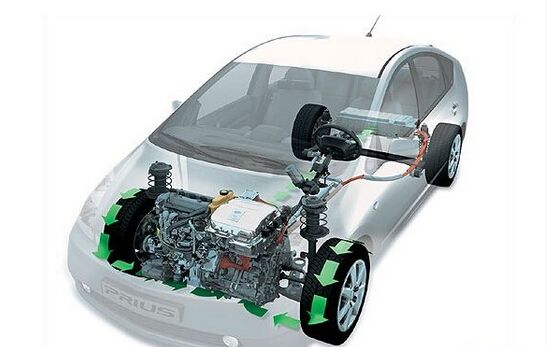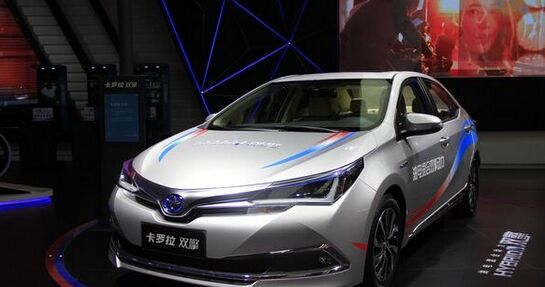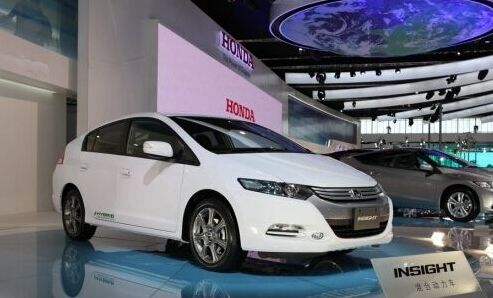Today, ethanol fuel vehicles, methanol fuel vehicles, hybrid vehicles, pure electric vehicles, plug-in hybrid vehicles, solar electric vehicles, and hydrogen fuel cell vehicles are emerging one after another.
This article refers to the address: http://
Hybrid vehicles are almost indistinguishable from traditional vehicles in terms of driving and maintenance, achieving a 40% reduction in fuel consumption compared to conventional vehicles. At the same time, the hybrid's power performance can be increased by 30%. Because it is better to balance the driving experience in energy conservation and environmental protection, the hybrid car is considered to be the most environmentally friendly car that is currently popular.

Toyota, which is called the "original" of the hybrid car, is undoubtedly the only one. In fact, Toyota released the world's first mass-produced hybrid car, the Prius, in December 1997. Since the birth of the first Prius in the past 18 years, Toyota Hybrid has achieved a cumulative sales volume of over 8 million units worldwide, and the average monthly sales volume has remained at around 100,000 units. Of course, the Toyota hybrid, not to mention the famous THS system, the full name of the THS system Toyota Hybrid System, is a hybrid hybrid, Toyota's Prius, Camry Zunrui and other hybrid models are equipped with THS system.
The main components of the THS system are gasoline engines, permanent magnet AC synchronous motors, generators, high performance metal hydride battery packs and power control units. The different models of the gasoline engine are equipped with different models, but the same point is the Atkinson cycle.
The Corolla Twin Engine uses Toyota Hybrid Twin-Power technology, which enables gasoline engines and electric motors to work together to take full advantage of the power sources and efficiently control output distribution for high acceleration performance, quietness and low fuel consumption. Low emissions coexist.

Efficient hybrid technology ensures outstanding power performance while balancing low fuel consumption and low emissions. The Corolla twin-engine 1.8L Atkinson cycle engine is equipped with the E-CVT electronic infinitely variable speed system to work in coordination with the electric motor. In the daily life, especially on urban roads, the most common speed is 20-50 km/h, the acceleration reaches 3.1 seconds, and the fuel consumption per 100 km is only 4.2 liters. In addition, its high-efficiency engine itself has minimized exhaust emissions and reduces environmental pollution when driving on a motor alone.
The basic structure of the hybrid electric vehicle is the engine + electric motor two power systems, plus control modules, battery packs and so on.
1. According to the matching method of the power system, it can be divided into:
(1) Series (2) Parallel (3) Series and Parallel
Series (SHEV) features:
SHEV is composed of three main powertrains: engine, generator and drive motor. At the beginning of the vehicle, the battery pack is in a state of saturation of electricity, and its energy output can meet the requirements of the vehicle. The auxiliary power system does not need to work. The DC output of the battery is converted into the torque of the drive motor and the output of the drive motor after the controller is changed to AC power. The wheels are driven via a transmission, drive shaft and drive axle. When the battery pack is less than 60%, the auxiliary power system is started to supply energy to the drive system, and the battery pack is also charged. When the energy demand of the vehicle is large, the auxiliary power system and the battery pack simultaneously supply energy to the drive system, and the alternating current generated by the engine-generator set is converted into direct current by the rectifier and the direct current output of the battery is converted into alternating current by the controller and supplied to the drive motor.
Parallel (PHEV) features
The PHEV consists of two main powertrains: the engine and the electric motor, the engine or the drive motor. They form the drive system in a "parallel" manner. The power of the motor is combined with the vehicle drive system to: (1) combine at the engine output shaft; (2) combine at the transmission (including the transaxle); (3) combine at the drive axle. The driving mode is: 1) the engine drive is the basic drive mode, the rear drive wheel is driven independently; 2) the drive motor is the auxiliary drive mode, and the front drive wheel can be driven independently; during the hybrid drive, the engine-driven rear wheel power and drive motor The front wheel power of the drive is combined to become a hybrid four-drive mode.
Hybrid (PSHEV) features
The PSHEV is a combination of SHEV and PHEV structural features, consisting of three main powertrains: engine, electric motor or engine and drive motor. The power of the electric motor is adapted to the vehicle drive system and can be combined at the transmission (including the transaxle) or at the drive wheels. The driving mode is: 1) the engine drive is the basic driving mode, the motor/engine is driven, and the rear driving wheel is driven independently; 2) the driving motor is used as the auxiliary driving mode, and the front driving wheel can be driven independently; 3) during the hybrid driving The engine-driven rear-wheel power is combined with the front-wheel power driven by the drive motor to become a hybrid four-wheel drive mode.
2. Differentiate the hybrid system according to the degree of Hybrid:
Mild/micro hybrid
This hybrid system is equipped with a belt drive starter motor (also known as the Belt-alternator Starter Generator, or BSG system) on the starter motor (usually 12V) of the conventional internal combustion engine. The motor is a Stop-Start integrated motor that controls the start and stop of the engine, eliminating engine idling, reducing fuel consumption and emissions, but its motor does not provide continuous power for the car.

Honda "light mix" model
Moderate hybrid
The hybrid system also uses an ISG system. Unlike a mild hybrid system, the medium hybrid system uses a high voltage motor. In addition, the hybrid power system adds a function: when the car is under acceleration or heavy load conditions, the motor can assist the drive of the wheel, thereby supplementing the lack of power output of the engine itself, thereby better improving the performance of the vehicle. This system has a high degree of mixing, and the current technology is mature and widely used.
Full hybrid
The system uses a 272-650v high-voltage starter motor, powered by a car battery, the motor can drive the vehicle alone during start-up or cruise, and the engine is driven by the internal combustion engine alone or in combination with the motor in the case of acceleration or insufficient battery energy. . The full hybrid system has a higher degree of mixing than the mid-hybrid system. The development of technology will make the complete hybrid system gradually become the main development direction of hybrid technology.
Motorcycle device for giving light, especially one that has a covering or is contained within something. Motorcycle bulb is ensure the driving safety of locomotive driving at night, lighting the way of the light bulb, motorcycle bulb for you and your family safe and comfortable on the road, motorcycle bulb to locomotive supplies, car will focus on locomotive products services, poor lighting conditions, easy cause eye fatigue, more can't provide the driver effective radiation intensity and area, good motorcycle bulb can provide you with higher brightness and better field of vision, also can improve the driving comfort and safety, ensure your driving safety, confidence makes driving.
Motorcycle Lamp Bulb,Motorcycle Parts,Car Halogen Lamp Bulb,Lamp Bulb For Automotive
SHINING BLICK ENTERPRISES CO., LTD. (Heshan Jianhao Lighting Industrial Co., Ltd.) , https://www.sunclubtw.com